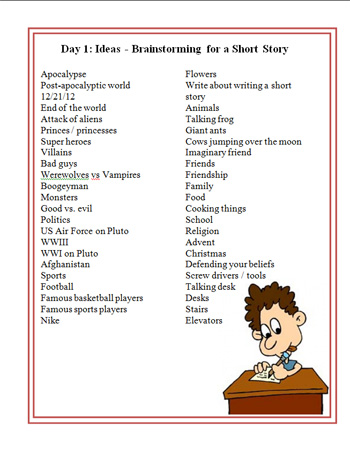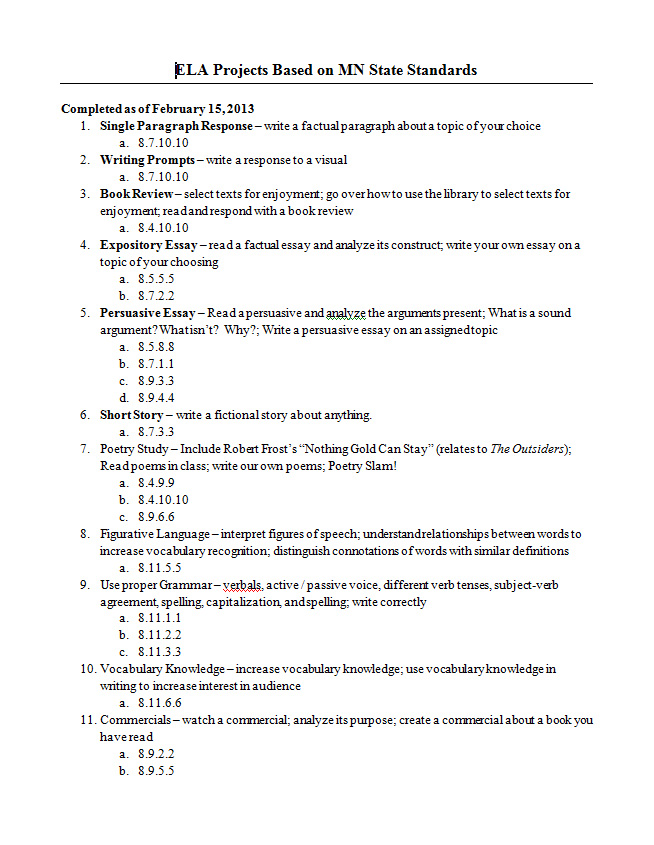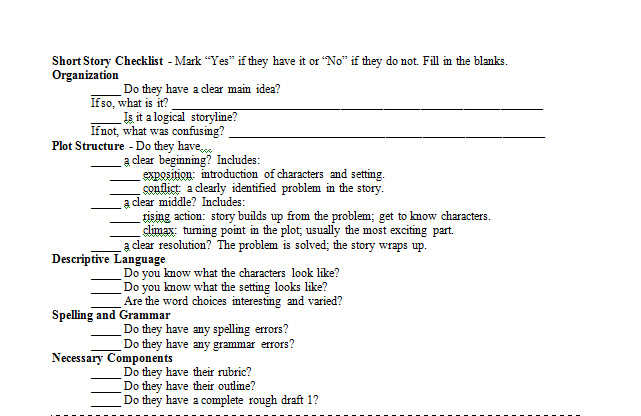Writing Short Stories and Meeting the Common Core Standards!
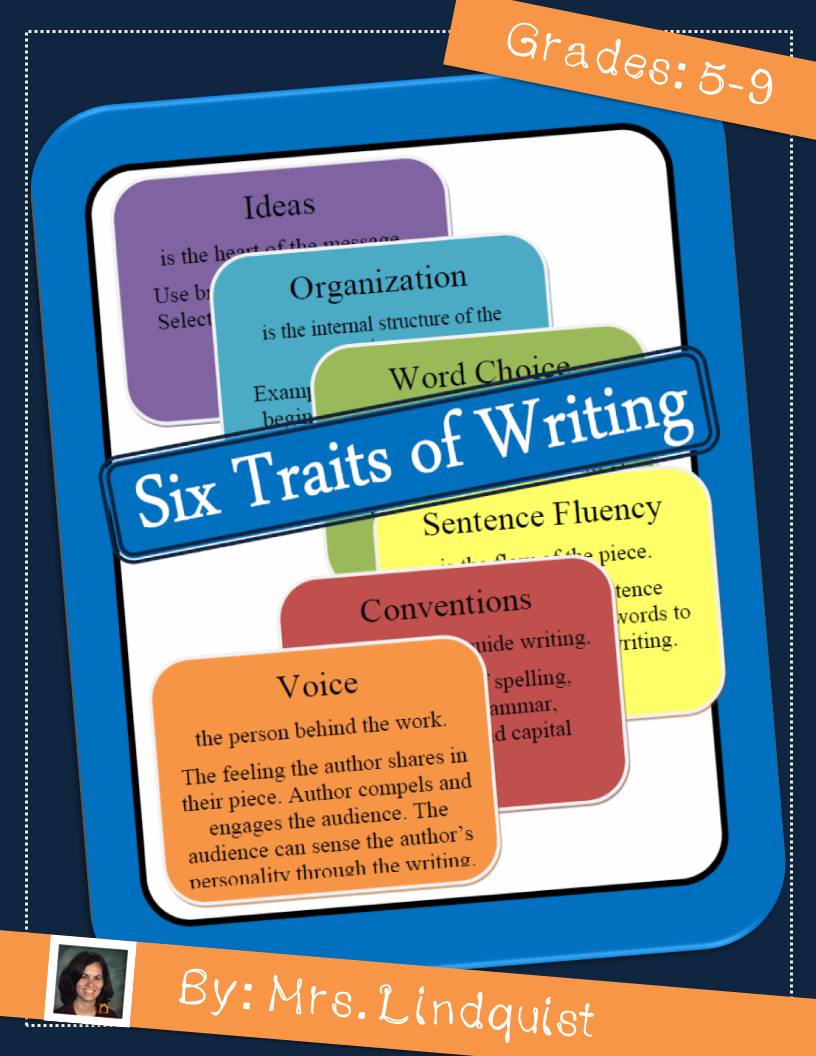 Each year brings a new group of students to my room. So, to get a feel for where they are in their writing, I like to have them write a short story. Short stories and fiction are frequently used in younger grades and they have likely had the most experience with that type of writing, so it's their chance to be creative and show off their strengths in writing. It also gives me a great starting place for which writing concepts they understand and which we will need to work on.
Each year brings a new group of students to my room. So, to get a feel for where they are in their writing, I like to have them write a short story. Short stories and fiction are frequently used in younger grades and they have likely had the most experience with that type of writing, so it's their chance to be creative and show off their strengths in writing. It also gives me a great starting place for which writing concepts they understand and which we will need to work on.
To ensure their greatest success, I offer a variety of tools including: in-class brainstorming sessions, outlines, and rubrics. This allows students to bounce ideas off of each other and see all the requirements before they turn in their final copy. The following is an outline of how I would organize a writing unit and the tools I use. If you are interested in purchasing this product, you can find it at Mrs. Lindquist's Store on TeachersPayTeachers.
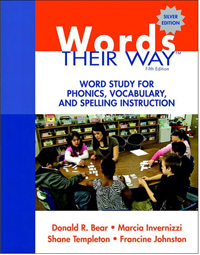 |
Getting Organized After consulting my Common Core Projects chart and my monthly calendar, I prepare my daily lesson plans and make the copies I'll need for the week. Inevitably something will happen that wasn't in the plan, but having a plan means I'm ready for anything, whether it be finishing a task early because students get the concept or needing more time due to interruptions or a lack of understanding. Once my lesson plans and copies are ready, it's time to teach! |
|
|
Day 1 - Elements of Plot Mini Lesson and Brainstorming Time! (Plan for about 25-30 minutes) Then, we brainstorm ideas for stories using the projector. If students get stuck, I'll start writing some ideas to get them motivated again. Students will come up with everything from vampires and werewolves to sports, from the end of the world to rehashes of their favorite books or movies. As long as the idea is school appropriate, we write it to share. After about 5 minutes of brainstorming, I give them the rest of class (usually about 2-3 minutes) to start thinking about which topic interests them the most. |
|
|
Day 2 - Understanding the Rubric and Prewriting: Outlining the Elements of Plot! (Plan for about 25 minutes) After everyone has shared, we go over the Short Story Rubric. I've learned over the years that most students will not read the rubric or keep it on hand unless I teach them to, so we always start out any unit be reading the rubric together. If this is the first time your students are seeing a rubric, be sure that you read over it and ask them questions to gauge their understanding. My first year teaching I made so many assumptions about what the students did and did not understand; I kept getting low quality work and being frustrated that they weren't understanding what I wanted. It took me a while to realize that I needed to teach the rubric much like I would teach other topics. Once you feel your students really understand the rubric and requirements, it's time to read over the Short Story Outline. This includes the elements of plot, helps them get used to the new vocabularly, and encourages them to organize their story. I then allow in class work time and walk around the room to check in with students. I've had students that can start writing immediately and others who stare angrily at the piece of paper until just before the bell rings before their muse strikes. In either case, I allow students that time to work out what they need to and at their pace. If anyone needs help, I make myself available. |
|
|
Days 3 and 4 - Drafting: Writing the first draft of the Short Story (Allow about 20 minutes each day) |
|
Day 5 - Editing and Revising: Using a Checklist for Peer Reviews (Allow 25 minutes) Before I have the students move to work with their partner, we go over the Peer Review Checklist. I try to make the checklist as concrete as possible so that students actually help their partner instead of handing back a virtually uncorrected paper saying "I didn't see anything wrong with it." Then, partners get together and work for 15 minutes. I make sure the students know that I expect them to edit their partner's paper for the full 15 minutes and that only if I see everyone working hard will I allow them more in class work time for this unit. When the 15 minutes is up, I have the students staple the Peer Review Checklist to their rough draft. If there is any additional time, students may begin revising their work or ask questions about any parts that were unclear. |
|
Days 6 and 7 - Drafting: Typing the second draft of the Short Story (Allow about 20 minutes each day) Again, I use this time to meet with students in short conferences or walk around the room to do informal check ins. If I see anyone struggling, this is a great time to offer help. When I see someone doing exceptionally well, I make an effort to let them know. |
|
Days 8 and 9 - Editing and Revising: Conference with the Teacher (Allow 41 minutes) |
|
Day 10 - Publishing: Share the Final Copy of your Short Story with the Class (Allow 41 minutes) This is of course only a guideline. Some classes need a lot more in class time to complete tasks while others will finish their rough draft in one day and be ready to peer review sooner. The above schedule is somewhere in the middle of the speed and meticulous writers. Remember: templates, rubric, brainstorming ideas, and more are available for only $3.00 with my Writing Short Stories using Six Traits as a Guide product! Enjoy. :) |


